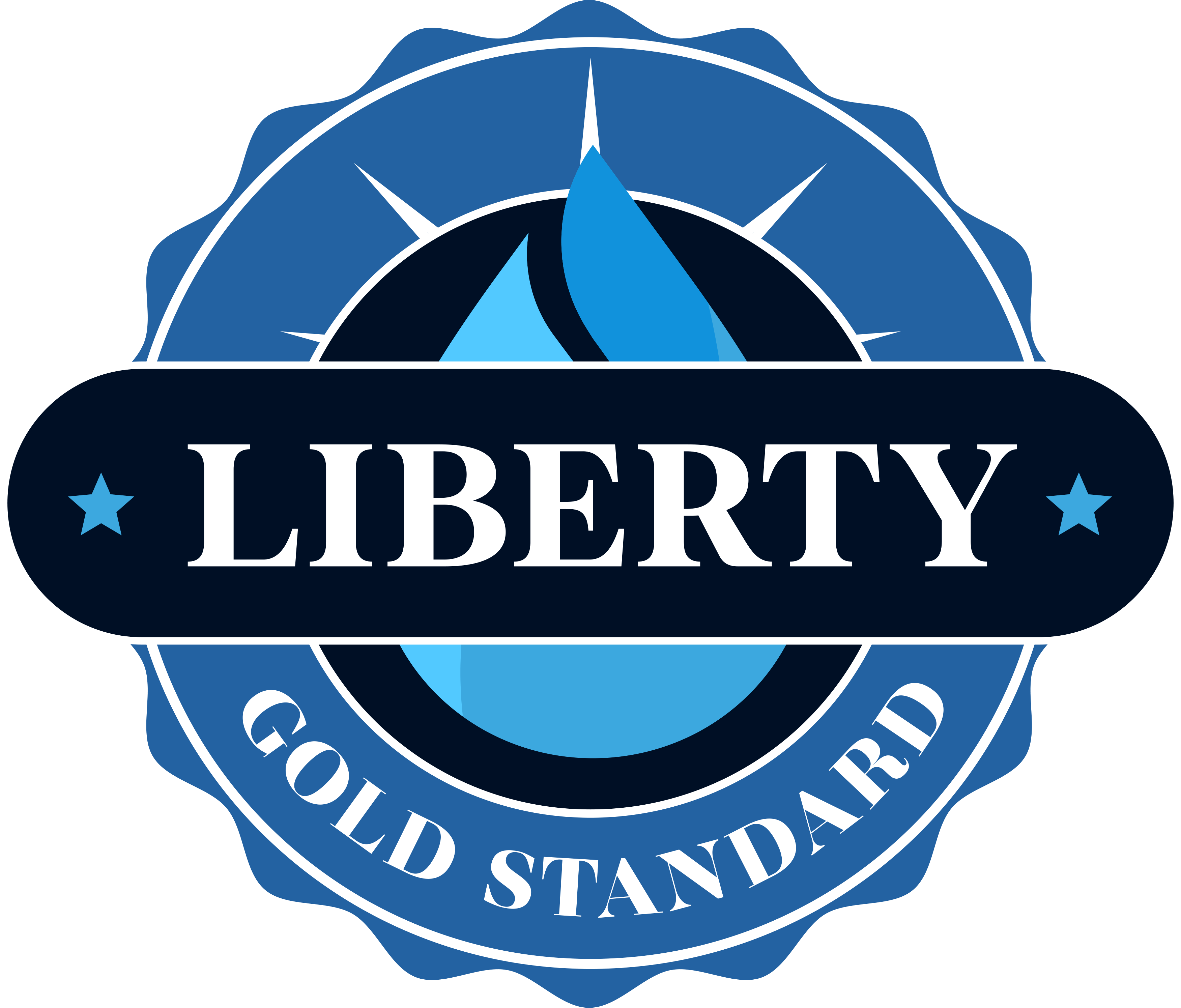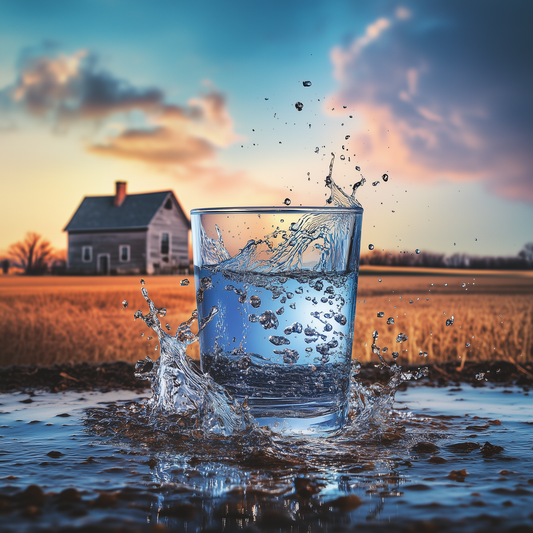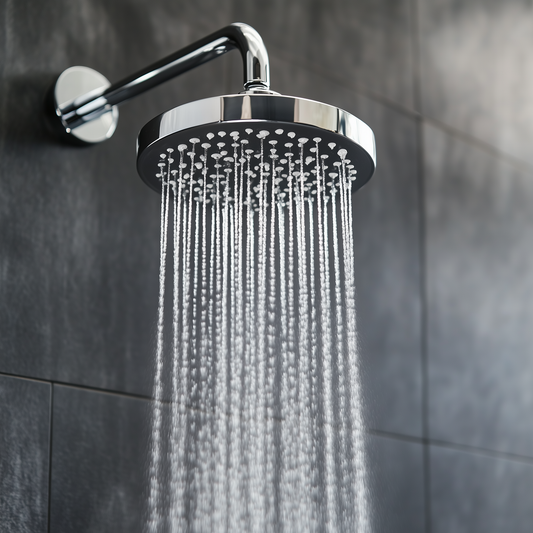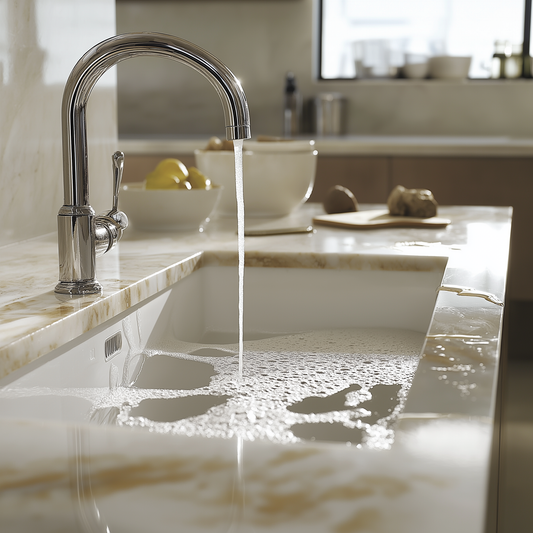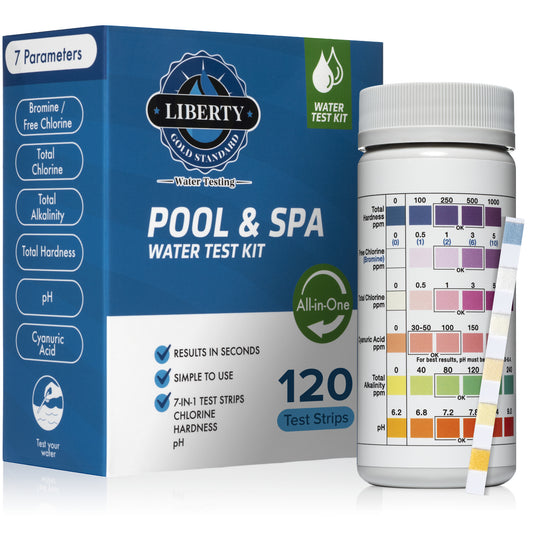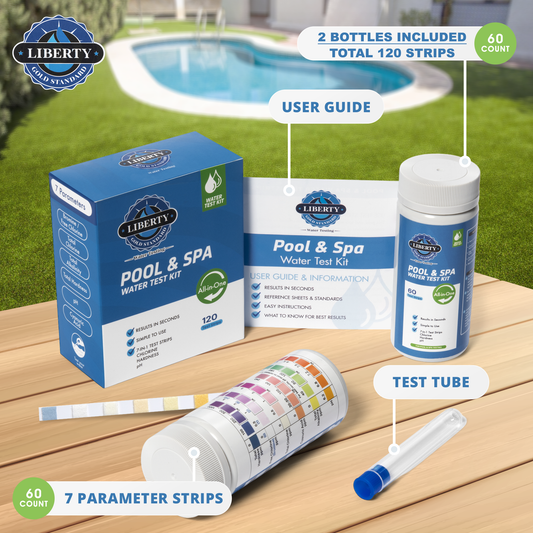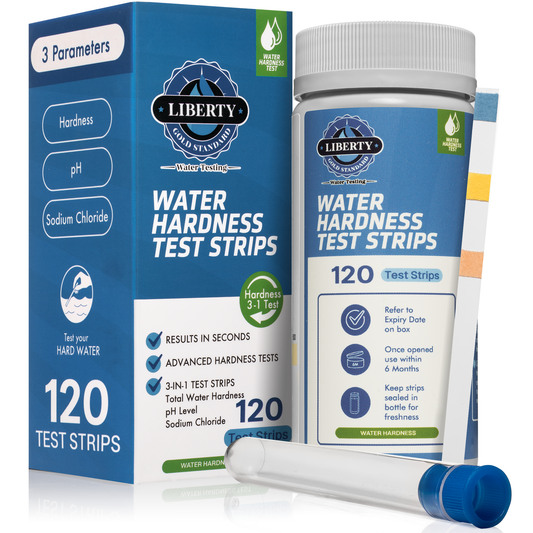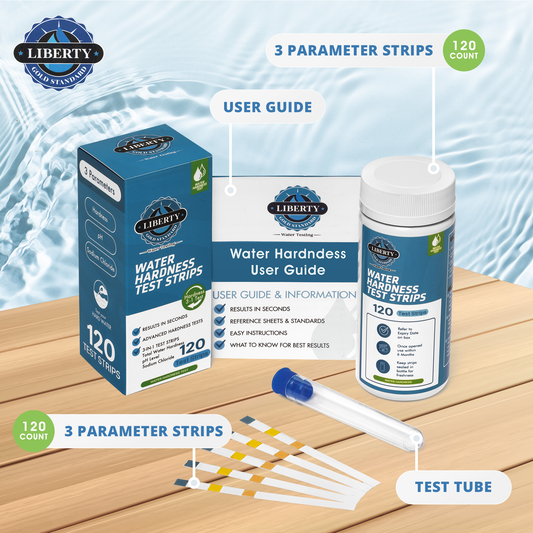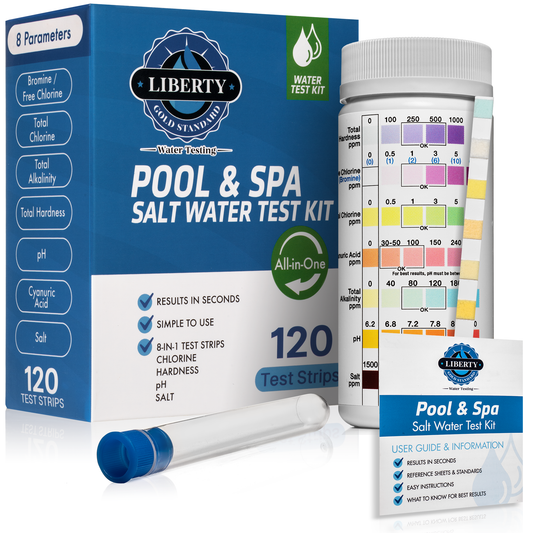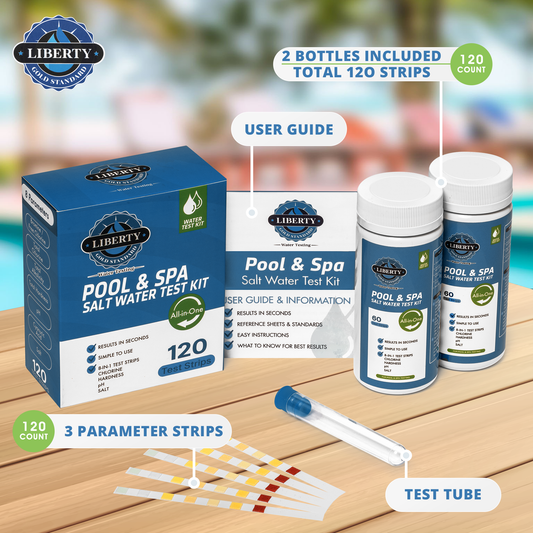When it comes to ensuring the safety of your water, testing for bacteria is crucial. The Liberty Gold Standard 145-Piece Kit provides a comprehensive solution for testing water quality. Here is a step-by-step guide on how to correctly test for bacteria in your water using this kit.
How to Use the Liberty Gold Standard All-in-One 145-Piece Kit that comes with 3 bacteria tests
1. Collect a water sample with pipette provided in the kit.
2. Follow the instructions on each bag and on on instructions.
3. Use the provided bags and purple pads to analyze the water sample for the presence of bacteria. Use the pipette to add water to bag, seal it, and lay flat so padding is absorbed by water.
4. Wait for the specified amount of time (about 48 hours) for the results to develop.
5. Compare the color changes to the reference chart included in the kit to determine the bacteria levels in the water. If the pad changes colors, bacteria has been detected.

What to Do If Bacteria is Detected
If the test results indicate the presence of bacteria in your water, it is important to take immediate action. Here are some steps you should follow:
1. Boil the water before using it for drinking or cooking purposes.
2. Consider installing a water filtration system to remove bacteria and other contaminants.
3. Contact a water treatment professional to assess the situation and recommend appropriate solutions. You may also reach out to us for specific questions about test.
4. Here are some additional links that may answer questions about the types of bacteria we test for and the testing process itself.
Top 3 Questions and Answers About Testing Water for Bacteria
1. How often should I test my water for bacteria?
It is recommended to test your water for bacteria at least once a year, especially if you rely on well water or suspect contamination.
2. Can I use the Liberty Gold Standard 145-Piece Kit for testing other contaminants?
While the kit is specifically designed for testing bacteria, it can also detect other contaminants in water, providing a comprehensive analysis.
3. Are there any precautions I should take when collecting a water sample?
Ensure that the container used for collecting the water sample is clean and sterile to avoid any contamination that could affect the test results. Wash your hands before and after collecting the sample.
